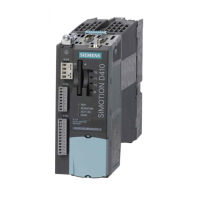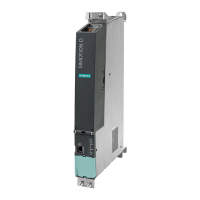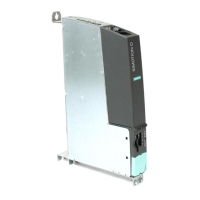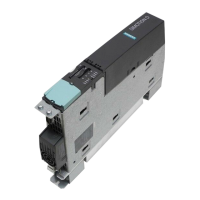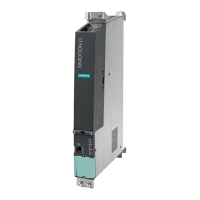Diagnostics
8.2 Diagnostic data and non-volatile SIMOTION data
SIMOTION D4x5-2
366 Commissioning and Hardware Installation Manual, 02/2012
8.2.2.5 Storing data
Storing diagnostics data and non-volatile SIMOTION data
You can find diagnostics data and non-volatile SIMOTION data on the CompactFlash card in
the \USER\SIMOTION\HMI\SYSLOG\DIAG directory.
Copy this data and transfer it to technical support on request. A standard card reader can be
used to transfer the diagnostics data from the CompactFlash card via standard IT DIAG
pages or via FTP.
The following data is stored:
Table 8- 13 Diagnostic data on the CompactFlash card
File Application
DIAGBUF.TXT Diagnostic buffer in a simple text format:
Numerical values; no specific plain text. A text editor is used for evaluation
purposes.
PMEMORY.XML Non-volatile data (retain data)
You can restore the backed up non-volatile SIMOTION data "via an operator
action" after a CPU has been replaced.
(See Section Deleting/restoring non-volati
le SIMOTION data (Page 368).)
TOALARMS.TXT Text file containing the pending TO alarms. Only TO IDs, alarm numbers,
and associated HEX values.
Note:
The TO alarms are only created if diagnostics data has been created during
operation (STOP/STOPU/RUN).
HTML page If the diagnostics data is backed up, the URLs are requested from the text
file (DIAGURLS.TXT) and stored as HTML pages together with their
contents.
(See Section Diagnostics via websites (Page 367).)
Note: T
he HTML pages are only stored if diagnostics data is created during
operation (STOP/STOPU/RUN).
Other files All other files stored in the directory are only of relevance to technical
support.
Note
Use HTML pages if you wish to back up diagnostics data in plain-text format. HTML pages
enable user-friendly diagnostics. In addition to the standard IT DIAG diagnostics pages, you
have the option of creating your own HTML pages (e.g. for the axis status or for machine
diagnostics). Customized diagnostics pages are particularly suitable for application
problems, as you can define the contents yourself.

